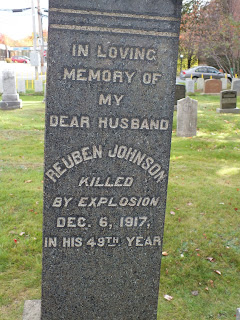In 1802, Lord Selkirk approached the Colonial Office for a subsidized settlement grant in Sault-Ste Marie, Upper Canada, with the hopes of establishing a settlement where the displaced Highlanders could once again farm their own land. The Colonial Secretary instead offered a land grant in Prince Edward Island, in the Belfast area, near Wood Islandson the southwest shore. Upon receipt of this notice, Selkirk wasted no time in recruiting highland emigrants or in contracting ships and supplies.
In July 1803, three ships, the Dykes, the Polly, and the Oughton sailed to Canada with eight hundred former highland crofters and headed to Prince Edward Island. The Polly arrived in the harbourof Orwell Bay, Prince Edward Island on Sunday, August 7th, 1803, carrying 250 adults and 150 children. Most of these passengers were from Skye. The Dykes, which also brought Lord Selkirk, arrived in Charlottetown two days after the Polly. Most of the passengers on the Polly were from Mull. The Oughton arrived on August 27th, 1803, carrying another 40 or 50 passengers, this time from Uist.
The land given to these new settlers consisted primarily of evergreen forest. Each family was given between 50 and 150 acres for a nominal fee. The lots were laid out so that four or five families were grouped together. Each parcel of land granted access to the waterfront. Many families spent their first winter in makeshift lean-tos. However, come spring, the new immigrants worked together to clear their lands, build their houses, and settle into their new lives.
Being able to work the land once again became somewhat of a tonic for them. Because these settlers had come with their families or members of their communities, they arrived with their social support system and this made the transition to life in the new world much easier for them. These Highland Scots were a self sufficient community within a year of their arrival.
Later generations moved to the BruceCounty area of Ontario, setting up communities along the SaugeenRiver near Paisley as well as along the south coast of Lake Huron from Southamptonto Kincardine.
Having used his land on the southwest shoreof PEI for the initial settlers, Selkirk was eager to continue to pursue his original desire to find land in Upper Canada. He was eventually able to purchase land in Southern Ontario, near the junction of Lake St. Clair and the Detroit River, in what is now Wallaceburg. This was a problematic scheme in that the land was very different than that granted in PEI. The first winter saw deaths of 15 people through malaria from the mosquitoes in the damp, forested lands. Selkirk soon abandoned this settlement. However, the Scots remained and became very successful in their new country. The Scottish influence of these early settlers can be seen throughout the south western most part of Ontario.
Selkirk later managed to persuade the Hudson Bay Company that an agricultural settlement would lower their costs since local farmers would be able to produce goods that, at the time, the company was having to import at great expense. Selkirk was able to purchase 116,000 square miles in the Red River Valley and along the Assiniboine River in Manitobaand what is now Northern Dakota and parts of Northern Minnesota. This land mass was five times the size of the whole of Scotland. Selkirk purchased this land at a cost of 10/s ($26.50 in today’s currency).
This settlement was not without its difficulties and there were many physical battles as well as court battles between the early settlers and the Hudson's Bay Company, Canada's largest retail trading post. Many of the early settlers married into the local aboriginal communities, creating the Metis nation.
If you have ancestors who were Selkirk Settlers, here are some resources to assist you in your genealogy research:
Passenger List reconstruction for ship Polly:
Passenger List reconstruction for ship Dykes:
Passenger List reconstruction for ship Oughton:
Passenger List reconstruction for ship Spencer:
Hudsons Bay Company Archives:
There are some archives regarding the men from Orkney, Scotland, who were recruited as indentured workers with the Hudson's Bay Company in the archives in Stromness, Orkney. These are not available online.
Some records are also available at Library and Archives Canada. These records need to be consulted in person.





































